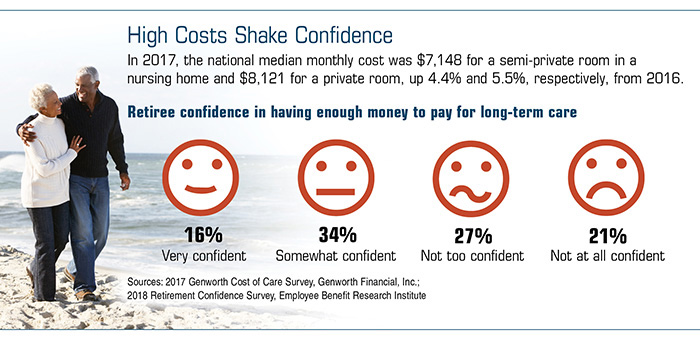Unknown Facts About Pacific Prime
Unknown Facts About Pacific Prime
Blog Article
The 9-Minute Rule for Pacific Prime
Table of ContentsNot known Incorrect Statements About Pacific Prime 7 Easy Facts About Pacific Prime ShownPacific Prime Things To Know Before You BuySome Of Pacific PrimeAn Unbiased View of Pacific Prime

This is because the data were collected for a period of solid financial efficiency. Of the estimated 42 million people who were without insurance, just about regarding 420,000 (concerning 1 percent) were under 65 years of age, the age at which most Americans become eligible for Medicare; 32 million were grownups in between ages 18 and 65, about 19 percent of all adults in this age; and 10 million were kids under 18 years old, about 13.9 percent of all children (Mills, 2000).
These price quotes of the variety of persons uninsured are generated from the yearly March Supplement to the Existing Population Study (CPS), performed by the Census Bureau. Unless otherwise noted, nationwide estimates of people without medical insurance and percentages of the populace with different kinds of protection are based upon the CPS, the most commonly utilized resource of estimates of insurance policy protection and uninsurance prices.
How Pacific Prime can Save You Time, Stress, and Money.

Still, the CPS is especially useful because it produces yearly quotes fairly rapidly, reporting the previous year's insurance policy protection estimates each September, and because it is the basis for a constant collection of quotes for greater than two decades, enabling analysis of trends in coverage with time. For these factors, along with the substantial use of the CPS in other researches of insurance policy protection that exist in this record, we rely upon CPS estimates, with restrictions noted.

The estimate of the variety of uninsured people expands when a populace's insurance standing is tracked for numerous years. Over a three-year period starting early in 1993, 72 million people, 29 percent of the united state population, lacked insurance coverage for a minimum of one month. Within a single year (1994 ), 53 million people experienced at the very least a month without coverage (Bennefield, 1998a)
6 out of every ten without insurance grownups are themselves employed. Although working does improve the chance that and one's member of the family will have insurance policy, it is not an assurance. Also participants of households with 2 full time wage earners have practically a one-in-ten chance of being without insurance (9.1 percent uninsured price) (Hoffman Continued and Pohl, 2000).
Indicators on Pacific Prime You Need To Know
New immigrants represent a considerable percentage of people without health and wellness insurance coverage. One evaluation has actually attributed a substantial part of the current development in the dimension of the U.S. without insurance population to immigrants that arrived in the country in between 1994 and 1998 (Camarota and Edwards, 2000). Recent immigrants (those who involved the USA within the previous 4 years) do have a high price of being uninsured (46 percent), however they and their children represent simply 6 percent of those without insurance coverage country wide (Holahan et al., 2001).
The partnership in between wellness insurance coverage and accessibility to care is well developed, as documented later in this chapter. The partnership in between health and wellness insurance policy and wellness results is neither straight neither simple, a comprehensive scientific and health and wellness services research literary works web links health insurance policy protection to enhanced access to care, far better high quality, and improved individual and populace health standing.
Degrees of analysis for checking out the impacts of uninsurance. It focuses especially on those without any type of wellness insurance coverage for any type of length of time.
Examine This Report on Pacific Prime
The troubles encountered by the underinsured are in some areas comparable to those encountered by the uninsured, although they are usually much less extreme. international travel insurance. Uninsurance and underinsurance, however, include distinctly different policy concerns, and the approaches for addressing them may differ. Throughout this research study and the five records to follow, the major focus is on individuals without any medical insurance and therefore no support in paying for healthcare past what is available via charity and safety and security net organizations
Medical insurance is a powerful factor impacting invoice of care due to the fact that both people and doctors react to the out-of-pocket cost of services - https://www.figma.com/file/DQaAURKv0Xz32XUI9NJXrd/Untitled?type=design&node-id=0%3A1&mode=design&t=rR5Yq5DjXQg5AhnB-1. Health and wellness insurance coverage, nevertheless, is neither needed neither adequate to get to medical solutions. However, the independent and straight result of wellness insurance policy coverage on accessibility to wellness solutions is well established.
Others will acquire the health and wellness care they need also without medical insurance, by paying for it expense or seeking it from carriers who provide care cost-free or at very subsidized prices. For still others, health insurance coverage alone does not make certain invoice of care due to various other nonfinancial barriers, such as a lack of healthcare companies in their community, restricted accessibility to transportation, illiteracy, or etymological and social differences.
Getting My Pacific Prime To Work
Official research regarding uninsured populations in the USA dates to the late 1920s and very early 1930s when the Board on the Price of Medical Treatment generated a collection of records concerning funding medical professional office visits and hospitalizations. This issue ended up being significant as the varieties of clinically indigent climbed up during the Great Clinical depression.
Report this page